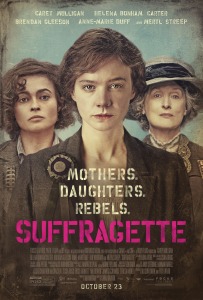There’s a big difference in seeing an actor’s face 50 feet high on the silver screen than seeing an actor just five inches high on a stage that’s a mile away. There’s definitely something to seeing and hearing that little person live, but there’s a lot of emotion and expression that we only get from the movies.
So part of the thrill of this new adaptation of the classic musical “Les Miserables” is in making the emotions of Jean Valjean and Fantine be as big as possible. Director Tom Hooper (“The King’s Speech”) has put them in an appropriately sized film that feels epic but not overstuffed, but did he really have to make their faces so big too?
Simply put, “Les Miz” is frustratingly un-cinematic. It achieves images that the stage never could but stifles the possibilities of what a camera can do and what an epically proportioned musical can and should look like. At every moment it emblazons these characters in intense close-ups and very little breathing room. Try as Hugh Jackman might to parade around the room of a monastery, the camera follows him mercilessly, refusing to break from a centered close-up of Valjean’s ill-fated face as though the camera were attached to a harness around his chest.
Hooper covers his tracks by chopping the movie to bits in the editing room. The average shot length is infuriatingly short, but not in the excessive Baz Luhrmann way either; Hooper simply doesn’t know when to stay put.
He does however realize that there’s true wonder in seeing the whole cast belt out a medley of themes during magnificent pop opera numbers like “One Day More,” and this is especially true when we get the opportunity to see them on stage together. Why then should Hooper separate each individual singer into claustrophobic boxes? Why does he refuse to let multiple characters share the frame at once? Why must it look like we’re watching this whole movie on a stadium Jumbotron?
It gets nauseating and delirious watching something so jarring. The makeup and hairstyles are garish, the lighting is dark and muddy, and the camera captures Parisian alleys and sewers with Dutch angles and a quivering hand. It can be as punishing as watching Fantine (Anne Hathaway) drunkenly stumble around in agony during the “Lovely Lady” number.
You long for the firm hand and intricate medium shots Hooper used to excess in “The King’s Speech” and “The Damned United.” How did this director change so thoroughly between films? Now Hooper’s close-ups are so intensified, they’d be boring to look at if Anne Hathaway weren’t pouring her heart and soul into “I Dreamed a Dream.”
She, amongst the rest of the cast, really are the saving grace of “Les Miz.” Hathaway’s Fantine is really just a minor character in this epic revolution drama, but amongst all the moments each character gets to themselves, hers is by far the most memorable, her face convulsing in agony and her eyes too sad to even care the camera is so close.
Much of these gripes won’t matter much to most audiences. They’ll be swept up in the way I was upon first seeing a touring production of “Les Miserables” in London, invigorated and inspired by the story’s themes of commitment, honor and spirituality. But to those who pay attention to cinematography and editing, least of all in a treasured musical where these things matter most of all, “Les Miz” will feel mighty clumsy.
3 stars
 The real heist of “Ocean’s 8” is how they managed to fool us into thinking this was something new. Gary Ross’s film is effectively a remake of Steven Soderbergh’s “Ocean’s 11,” but with a gender-flipped cast. And instead of a radical experiment, a fresh point of view on a spectacularly male franchise, “Ocean’s 8” is an incredibly safe, unassuming, if amusing, retread with some slightly different faces.
The real heist of “Ocean’s 8” is how they managed to fool us into thinking this was something new. Gary Ross’s film is effectively a remake of Steven Soderbergh’s “Ocean’s 11,” but with a gender-flipped cast. And instead of a radical experiment, a fresh point of view on a spectacularly male franchise, “Ocean’s 8” is an incredibly safe, unassuming, if amusing, retread with some slightly different faces.
 Sarah Gavron’s “Suffragette” is most relevant today as a piece of historical fiction because issues of women’s rights are in 2015 as prevalent and significant as they were in 1912 London. It’s the slightly fictionalized story of English working women who took up civil disobedience in order to pressure the government to give women the vote.
Sarah Gavron’s “Suffragette” is most relevant today as a piece of historical fiction because issues of women’s rights are in 2015 as prevalent and significant as they were in 1912 London. It’s the slightly fictionalized story of English working women who took up civil disobedience in order to pressure the government to give women the vote.
